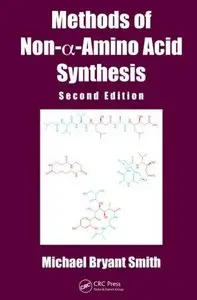Methods of Non–Amino Acid Synthesis, Second Edition by Michael Bryant Smith
English | 2013 | ISBN: 1466577894 | 242 pages | PDF | 19 MB
English | 2013 | ISBN: 1466577894 | 242 pages | PDF | 19 MB
Although less common than α-amino acids, non-α-amino acids—where the amino group is not on the carbon immediately adjacent to the carboxyl group but is attached to another carbon in the chain (for example, the β, γ, δ carbon)—are components of biologically important molecules, are significant in the pharmaceutical industry, and are useful starting materials for many areas of organic chemistry.
Since the publication of the first edition of this book nearly 20 years ago, synthetic work devoted to the preparation of non- α-amino acids has expanded greatly.
Methods of Non-α-Amino Acid Synthesis, Second Edition has been extensively rewritten and reorganized, providing an up-to-date review of strategies and methods for non-α-amino acid synthesis, particularly those amino acids that are key synthetic intermediates or important compounds in their own right. It focuses on acyclic amino acids of C3–C10, but also aminoalkanoic carboxylic acids, aminoalkenoic acids, and aminoalkynoic acids. The new edition contains many updated references and has a greater emphasis on the biological importance of non-α-amino acids. In addition to an array of synthetic methods, the book offers discussions on why non-α-amino acids are important.
The book covers synthetic methods that rely on substituent refunctionalization, the conversion of cyclic precursors to acyclic amino acids, conjugate addition reactions, and enolate anion reactions and condensation reactions that lead to non-α-amino acids. It also examines reactions and strategies that lead to good diastereoselectivity and enantioselectivity during synthesis. A chapter devoted to biologically important amino acids includes separate sections on GABA, GABOB, carnitine, DAVA, statine, and other significant amino acids as well as a new section on peptides and proteins that contain non-α-amino acids. The final chapter addresses aminocyclic and heterocyclic amino acids.



